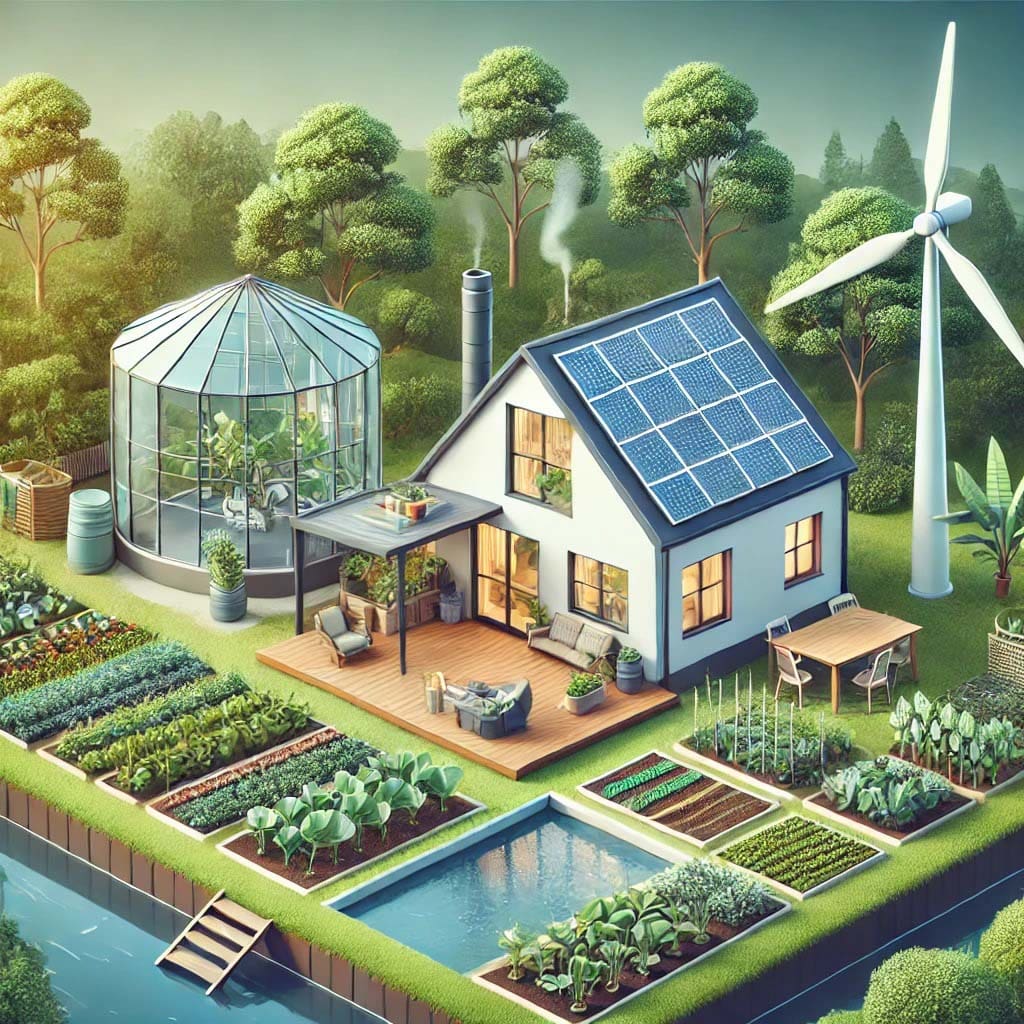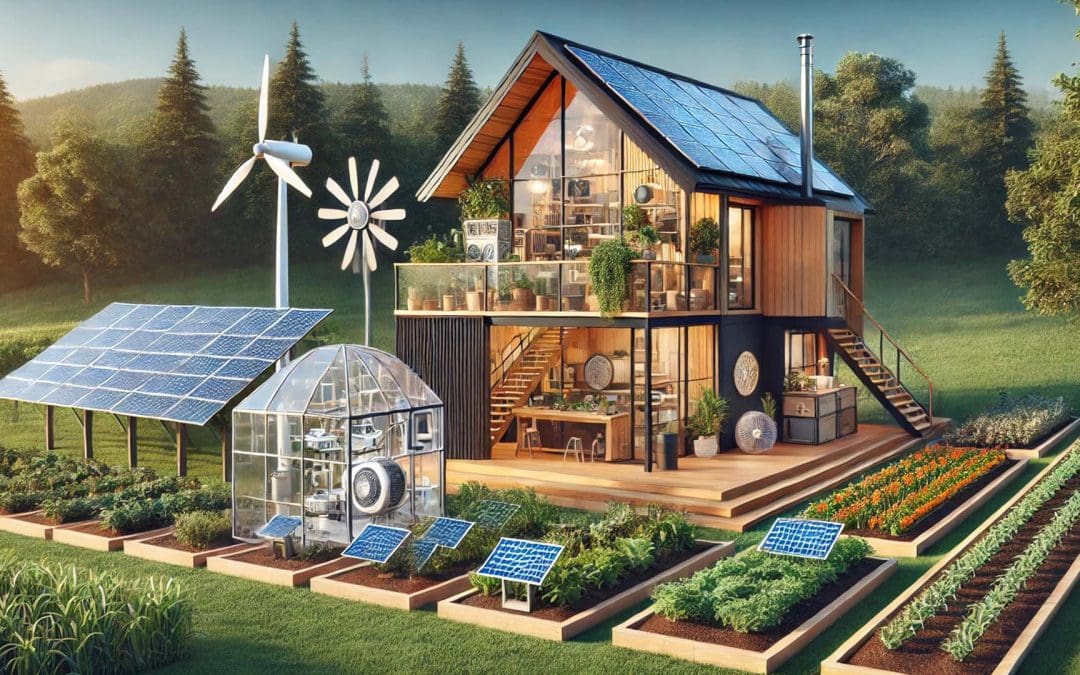When you think of off-grid living, you might picture a remote cabin with no electricity, a wood stove for heat, and a garden out back. While that image still holds true for some, modern off-grid homesteads have evolved into something entirely different. Today’s off-gridders are blending traditional self-reliance with cutting-edge technology to create efficient, sustainable, and surprisingly comfortable lifestyles.
So, what exactly sets a modern off-grid homestead apart from the traditional approach? Let’s dive into the features, benefits, and challenges that define the new era of off-grid living.
What Is a Modern Off-Grid Homestead?
Traditional Off-Grid Living
The traditional idea of off-grid living involves minimal reliance on technology or external resources. Think of it as living like pioneers—chopping wood for heat, growing your own food, and fetching water from a nearby well. While rewarding, this lifestyle can be labor-intensive and lacks many modern conveniences.
Modern Off-Grid Living
In contrast, modern off-grid homesteads incorporate renewable energy systems, smart technology, and sustainable building designs. The focus isn’t just on survival—it’s about thriving while maintaining a connection to the environment. These homesteads blend the charm of self-reliance with the comfort and efficiency of modern innovations.
Key Features of a Modern Off-Grid Homestead
1. Advanced Renewable Energy Systems
Modern off-grid homesteads rely heavily on renewable energy to power their homes. Solar panels, wind turbines, and micro-hydro systems provide clean, sustainable power. Energy storage systems, such as Tesla Powerwall or other advanced batteries, ensure electricity is available even during cloudy days or at night.
Many homes also use smart inverters and apps to monitor energy consumption and optimize efficiency, making energy management both simple and effective.
2. Sustainable Water Systems
Water independence is crucial for any off-grid homestead, and modern setups take it to the next level. Rainwater harvesting systems collect water from rooftops, and advanced filtration ensures it’s safe for drinking. Greywater recycling systems reuse wastewater for irrigation, reducing waste and conserving resources.
Smart irrigation systems, often controlled through apps, allow homesteaders to monitor and manage water use efficiently, making every drop count.
3. High-Tech Gardening and Food Production
Gone are the days of solely relying on basic garden plots. Modern off-grid homesteads often incorporate advanced food production techniques:
- Greenhouses with Climate Control: Automated systems manage temperature and humidity, extending the growing season year-round.
- Hydroponics and Aquaponics: These systems maximize food production with minimal water usage, making them ideal for drought-prone areas.
- Advanced Composting: Smart composters turn organic waste into nutrient-rich soil more efficiently than ever before.
4. Eco-Friendly Building Materials and Designs
The structures on a modern off-grid homestead are as innovative as their systems.
- Sustainable Materials: Many homes are built using reclaimed wood, recycled steel, or natural materials like straw bales or cob.
- Energy-Efficient Designs: Passive solar architecture, which maximizes natural heating and cooling, is common.
- Tiny Homes and Earthships: Compact, eco-friendly homes that are easy to maintain and have minimal environmental impact.
Modern vs. Traditional Off-Grid Homesteads
| Aspect | Traditional | Modern |
|---|---|---|
| Energy | Wood stoves, candles | Solar panels, wind turbines, battery storage |
| Food Production | Simple gardens, livestock | Greenhouses, aquaponics, smart composting |
| Water Systems | Basic wells | Rainwater harvesting, filtration, greywater recycling |
| Living Standards | Minimalistic & rustic | Comfortable with modern technology |
Benefits of a Modern Off-Grid Homestead
1. Increased Efficiency
Technology streamlines many aspects of off-grid living. Tasks that once required hours of labor, like heating water or managing crops, are now handled with energy-efficient systems.
2. Greater Comfort
With access to modern amenities like Wi-Fi, hot water, and climate-controlled spaces, off-grid living no longer means sacrificing comfort. You can have the best of both worlds—self-reliance and luxury.
3. Sustainability at Scale
Modern systems are designed to minimize waste and maximize resource use, making it easier to live sustainably without constant manual effort.

Challenges of a Modern Off-Grid Homestead
1. Higher Initial Costs
The advanced systems and technology that define modern off-grid living come with a price tag. Solar panels, battery storage, and smart systems can require significant upfront investment.
2. Maintenance Requirements
While technology simplifies daily tasks, it also requires regular upkeep. Solar panels, water filtration systems, and smart devices need to be monitored and maintained.
3. Dependency on Technology
For some, relying on technology feels counterintuitive to the off-grid lifestyle. If a critical system fails, it can cause disruptions, especially for beginners.
Is a Modern Off-Grid Homestead Right for You?
A modern off-grid homestead is ideal for those who value sustainability, independence, and comfort. If you’re willing to invest in advanced systems and enjoy the convenience of modern technology, it’s a lifestyle that offers both rewards and challenges.
However, it’s important to weigh your goals. If simplicity and minimalism are your top priorities, a traditional off-grid setup might be more appealing.
Conclusion
Modern off-grid homesteads represent a new chapter in sustainable living. By blending traditional principles with cutting-edge technology, they provide a lifestyle that’s efficient, eco-friendly, and surprisingly comfortable. Whether you’re drawn to renewable energy, smart gardening systems, or eco-friendly designs, the modern off-grid homestead offers a way to live in harmony with nature without compromising on modern conveniences.

